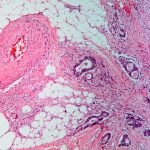
Some parasites manipulate their hosts to behave in ways that help spread the invaders to new environments or hosts. A study published online last month (February 27) in Behavioral Processesreports that the parasitic nematode Phasmarhabditis hermaphrodita infects slugs and directs them toward more parasites. The researchers found they could reproduce this behavior by increasing the slugs’ serotonin levels, indicating that the parasites might be using the same mechanism.
Just why the parasite might influence its host to pick up more parasites is unclear, making some researchers question if P. hermaphrodita is indeed manipulating its host’s behavior. “What the authors need to show is that there is a direct advantage to the parasites inside the host when the slug behavior changes,” Edwin Lewis, professor of nematology at the University of Idaho, writes to The Scientist in an email. “This is really difficult to show.”
In parasitizing slugs, P. hermaphrodita kills its hosts. It waits in the soil and penetrates passing slugs, which die within days or weeks. More nematodes emerge to feast and breed on the dead slug before they disperse into the soil.
In Europe, the nematode is used by farmers and gardeners to control slug pests, but slugs will do their best to avoid the parasites. “Every time the slugs are close to a nematode, they would run away like crazy,” says Robbie Rae, senior author of the study and a genetics lecturer at Liverpool John Moores University in the United Kingdom. Rae decided to investigate if a nematode infection would change the slug’s behavior.

ae’s team set up small arenas to test slug responses to nematodes. They filled boxes with peat soil and applied P. hermaphrodita to one half of each box. Five infected or uninfected slugs of the same species (either Deroceras panormitanum, Arion subfuscus, A. hortensis, Milax sowerbyi, or Lehmannia valentiana) were placed in the middle of the box. Every day for four days, the team recorded where the slugs were and how they behaved, and then returned them to the middle of the box.
The researchers found that infection changes slug behaviors. In four of the five slug species, individuals infected with P. hermaphrodita crawled onto the soil with the nematodes, while uninfected slugs either avoided the nematodes or showed no preference.
Rae does not yet know what signals the slugs pick up on. He suggests that it could be “some sort of small molecule released by P. hermaphrodita, and infection with nematodes is tinkering with the slug’s ability to not avoid that small molecule.”
The investigators then ran another experiment with the same setup but fed the slugs drugs that increase or decrease their serotonin levels, namely, the antidepressant fluoxetine (Prozac) and the anti-histamine cyproheptadine (Periactin), respectively. Serotonin makes the most logical target because it has been implicated in host-manipulation by other parasites, says Rae. They found that increasing serotonin in uninfected slugs made them seek out nematodes, while decreasing serotonin in infected slugs removed their affinity for nematodes.
The results hint that serotonin is part of the nematode’s control over slugs, but this still has to be confirmed directly, says Rae.
Other parasites also use serotonin to manipulate hosts for benefits. Spiny-headed worms(Acanthocephalus), for example, change the behavior of their aquatic amphipod hosts to gain access to their next host, a duck. The worms increase serotonin in the infected amphipod, causing them to swim up and linger at the surface to be eaten by ducks. In a similar manner, the trematode Euhaplorchis makes their killifish host easier prey for birds by decreasing serotonin in the killifish and making them dash to the surface.
See “Animal Mind Control”
In the case of P. hermaphrodita, it’s less clear what they gain from driving their slug hosts towards nematodes. The more nematodes that infect a slug, the faster they kill the slug, but also the less food each nematode gets.
Tommy Leung, who studies host-parasite interactions at the University of New England in Australia, says this uncertainty leaves open the question of whether the parasites are directly controlling the slugs. He writes in an email to The Scientist that “unless the behavioural change contributes to benefiting the parasite’s reproductive fitness in some ways, then it is more likely a side effect of pathology or disease.”
One possibility of what P. hermaphrodita might gain from directing slug behavior is help from additional nematodes to overwhelm the slug. Rae’s team is now running experiments to expose slugs to different doses of nematodes and check if there’s a point where slug manipulation is turned on or off.
Leung appreciates the effort to look for more examples of parasites manipulating hosts. “Most current studies into host-manipulation are based around a handful of well-studied parasite-host model systems, and there is a need to investigate a broader range of parasite-host systems to obtain a more representative picture of parasite host-manipulation in general.”











RSS